Bay Alarm Medical vs. LifeStation: Full Comparison for 2025
Bay Alarm Medical vs LifeStation: Key Takeaways
- Starting monthly costs vary from $24.95–$59.95 for Bay Alarm Medical, and $32.95–$43.95 for LifeStation.
- Both companies offer 24/7 monitoring systems, no long-term contracts, and a 30-day money-back guarantee.
- Both companies offer at-home and mobile devices.
- While Bay Alarm Medical and LifeStation offer similar products, services, and pricing, our team recommends Bay Alarm Medical based on its cost and product transparency.
Trying to decide between Bay Alarm Medical vs. LifeStation? They’re both well-known medical alert systems, but which is better? That depends on your individual needs.
Medical alert systems work using a small base unit paired with a wireless help button to connect to a company’s 24/7 monitoring center, using either a landline (for at-home systems) or cellular network (for mobile systems). When you press the device’s help button, the base unit receives the signal and connects you with the monitoring center, where trained operators dispatch emergency services if you need them.
Finding the right medical alert system that fits your needs can be difficult. Many medical alert companies offer similar products, each with multiple plans and models to choose from.
To help make it easier, our team conducted in-depth research on Bay Alarm Medical vs. LifeStation. Ultimately, we recommend Bay Alarm Medical over LifeStation, but both companies have pros and cons to consider.
Keep reading for a comprehensive overview of Bay Alarm Medical vs. LifeStation reviews to find the best product for you.
Why you can trust our expert reviews
Our team spent more than 2,500 hours conducting in-depth research on medical alert systems. During our process, we:
- Engaged in ongoing independent research
- Consulted with licensed adult caregivers and doctors who specialize in senior care
- Mystery shopped 13 medical alert system brands
- Surveyed 1,000 medical alert system users
- Tested various medical alert systems
- Read hundreds of verified customer reviews from trusted third parties, such as Better Business Bureau (BBB) and Trustpilot
Read more about our medical alert system review methodology.
Why we chose to review Bay Alarm Medical and LifeStation
To help you decide which medical alert system is best for you, we compared two well-known companies. We chose to review Bay Alarm Medical for its wide product variety and LifeStation for its low costs.
We surveyed medical alert system users and created a side-by-side comparison of Bay Alarm Medical vs. LifeStation based on costs, special features, and customer service. While they are similar in terms of products and services, some differences distinguish one brand from the other.
In our list of the best medical alert systems on the market, we named Bay Alarm Medical “Best for the Price” and LifeStation “Best Mobile Medical Alert System.”
If neither Bay Alarm Medical nor LifeStation are a good fit, there are several other medical alert systems to consider. For example, we named GetSafe “Best At-Home Medical Alert System,” and MobileHelp “Best All-Around System.”
It’s important you take the time to research medical alert systems and find what’s best for you. In our survey of 1,000 medical alert system users, more than 35% of respondents did extensive research for a few weeks before deciding which system to buy. Use our Bay Alarm Medical vs. LifeStation review to help you make the right choice for your needs.
Bay Alarm Medical vs LifeStation: Full Comparison
Bay Alarm Medical Review
Bay Alarm Medical started as Bay Alarm Home Security in 1947, expanding in 2007 to include medical alert services for older adults. The company contracts two monitoring centers in the U.S. to help guarantee a fast response when users press the help button.
The company’s website is simple to navigate and clearly describes its products and services, prices, and any promotions or bundled discounts.
One unique perk for Bay Alarm Medical is its Vial of Life program. All new customers get free access to this program, which allows customers to save medical information in their homes for emergency personnel to reference in an emergency. The company also offers the option to purchase clip-on accessories, known as Bella Charms, to make your medical alert necklace look like jewelry for those who want their device to look more discreet.
Long device range and short response time
Bay Alarm Medical also excels in the areas of device range and response time. Its at-home system has a 1,000-foot range from the base unit—which is double the range of LifeStation (500 feet).
Based on our testing, Bay Alarm Medical has a response time of 45+ seconds (how long it takes for the monitoring center operator to respond when you press the help button). LifeStation has an average response time of 15–25 seconds.
Equipment and activation fees
One potential downside to Bay Alarm Medical is the company’s equipment fees—it does charge equipment fees between $0–$159, while LifeStation charges no equipment fees. But because LifeStation doesn’t charge equipment fees, the devices aren’t yours to keep and you’ll need to return them in order to cancel. With Bay Alarm Medical, if you pay an equipment fee, the device is yours to keep.
Bay Alarm Medical systems overview
Bay Alarm Medical offers four device options and a choice of 10 plans.
Its device options include an at-home system with a necklace or wrist button that syncs to a base unit (SOS Home), a mobile GPS help button that can be clipped onto clothes or carried in a pocket or bag (SOS Mobile), and a smartwatch with a built-in GPS locator (SOS Smartwatch) and optional fall detection capabilities, or an all-in-one mobile GPS help button that comes with an additional help button (SOS All-in-One).
Plans include options for either a landline or 4GLTE cellular network connection (through Verizon or AT&T) for its at-home system, 4GLTE cellular network connection for its SOS All-in-One and SOS Mobile devices, and 4GLTE cellular network connection for its SOS Smartwatch. The SOS Mobile and SOS All-in-One includes caregiver tracking, and fall detection can be included for an additional $10 per month for all devices.
Bundled plans are also available. Wall buttons can be bundled for an additional $10 monthly per button with the SOS Home, and the SOS Home can be bundled with the SOS Mobile and SOS Smartwatch.
Bay Alarm Medical systems, in detail
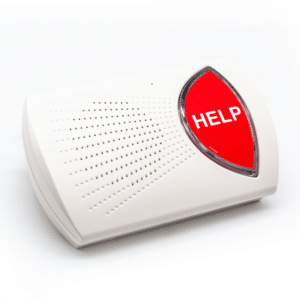
SOS Home
- Starting monthly cost: $27.95 (landline), $32.95 (cellular)
- Activation fee: $0
- Equipment fee: $0–$30
- Fall detection: $10 per month (cellular plan only)
- Dimensions: 1.38 x 1.38 x .59 inches (length x width x height)
- Weight: 1.5 ounces (oz)
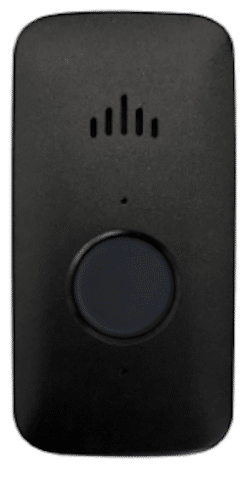
SOS Mobile
- Starting monthly cost: $32.95
- Activation fee: $0
- Equipment fee: $99
- Fall detection fee: $10 per month
- Dimensions: 2.7″ L x 1.3″ W x .5″ H
- Weight: 1.3 oz
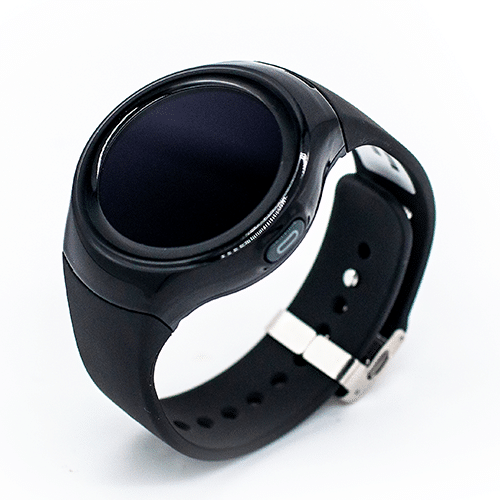
SOS Smartwatch
- Starting monthly cost: $34.95
- Activation fee: $0
- Equipment fee: $159
- Fall detection: $10 per month
- Dimensions: 1.25-inch-diameter watch face
- Weight: less than 2 oz

SOS All-in-One
- Starting monthly cost: $39.95
- Activation fee: $0
- Equipment fee: $119
- Fall detection: $10 per month
- Dimensions: 2.87″ L x 1.85″ W x .73″ H
- Weight: 1.8 oz
Bay Alarm Medical bundled deals
SOS Mobile 360° Bundle (SOS Mobile + SOS Home)
- Starting monthly cost: $60.95
- Activation fee: $0
- Equipment fee: $99
SOS Smartwatch 360° Bundle (SOS Smartwatch + SOS Home)
- Starting monthly cost: $62.95
- Activation fee: $0
- Equipment fee: $159
Customer service and payment options
When we called the customer service team at Bay Alarm Medical, we found them to be informative and friendly. They answered the phone immediately and didn’t subject us to any sales tactics.
The customer service team at Bay Alarm Medical is available by phone, email, or website chat.
The team is available by phone at 877-522-9633 Monday through Friday from 6 a.m. to 6 p.m. PT, Saturdays from 8 a.m. to 12 p.m. PT, and Sundays from 12:30 p.m. to 4:30 p.m. PT.
You can also email the customer service address at cs@bayalarmmedical.com.
Bay Alarm Medical accepts payments in the form of credit or debit cards: Visa, Mastercard, and Discover only.
LifeStation Review
LifeStation started as a family-owned business specializing in senior care more than 40 years ago. The company owns and manages two call centers, one in the United States and the other in Canada. Similar to Bay Alarm Medical, LifeStation offers two packages: at-home and mobile.
According to our testing, LifeStation has an average response time of 15–25 seconds, one of the fastest on the market and below the industry average of 30 seconds. Bay Alarm Medical has an average response time of 45+ seconds.
But when it comes to battery life, LifeStation has Bay Alarm Medical beat. The LifeStation mobile device lasts up to 120 hours on a single charge, while the Bay Alarm Medical mobile device only lasts up to 72 hours.
Pricing transparency
LifeStation’s website is simple to use, and the starting monthly rates for the at-home, mobile, and smartwatch devices are easy to locate. But one downside is you won’t know exactly how much you’ll pay until you’re actually ready to purchase the product.
For example, although the comparison page on the LifeStation website for the mobile system displays straightforward monthly costs depending on whether you purchase fall detection or the company’s protection plan (see Figure 1), it’s not until we got to the final order confirmation page that they saw the additional $99.95 activation fee (see Figure 2).
Figure 1 LifeStation Mobile system comparison page
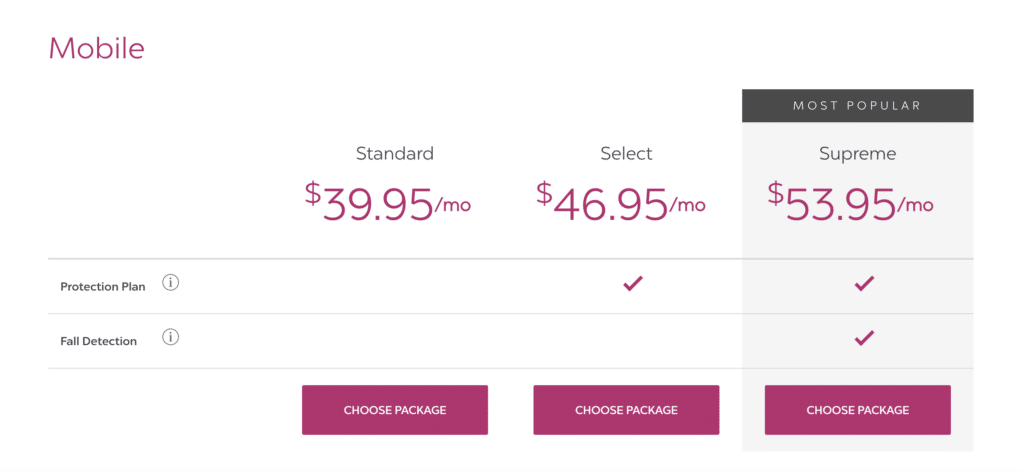
Figure 2 LifeStation Mobile system order confirmation page

LifeStation medical alert systems, in detail

In-home system
- Starting monthly cost: $34.95
- Activation fee: $0
- Equipment fee: $0
- Fall detection fee: $14 more than standard package ($48.95 per month)
- Dimensions: 6 x 6 x 2.8 inches (length x width x height)
- Weight: 1.23 pounds for the console, 0.56 oz for the help button
Sidekick Mobile system
- Starting monthly cost: $39.95
- Activation fee: $99.95
- Equipment fee: $0
- Fall detection fee: $53.95 per month ($14 more than standard package)
- Dimensions: 3.06″ L x 1.73″ W x .87″ H
- Weight: 2.5 oz
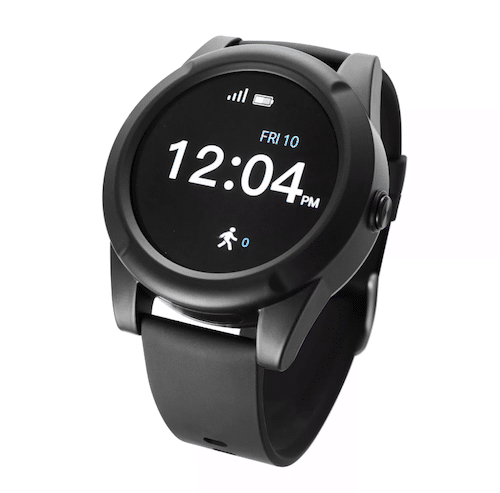
Sidekick Smart smartwatch
- Starting monthly cost: $46.95
- Activation fee: $99.95
- Equipment fee: $0
- Fall detection: Not available for smartwatch
- Dimensions: 1.82-inch-diameter screen size, 1.85-inch case size, 7–9 inch wristband
- Weight: 2.54 ounces
Customer service and payment options
Despite the pricing confusion, the customer service staff is courteous, they answer the phone immediately, and they don’t insist on a strong sales pitch before providing the information you need.
The customer service team at LifeStation is available by phone at 800-998-2400 Monday through Friday from 7 a.m. to 6 p.m. ET.
LifeStation accepts payments in the form of a linked checking account, debit cards from Visa or Mastercard, and credit cards from American Express, Visa, Mastercard, and Discover.
Table 1 Price comparison of Bay Alarm Medical vs. LifeStation
| Starting monthly cost | $27.95–$62.95 | $34.95–$53.95 |
| Equipment fee | $0–$159 | $0 |
| Activation fee | $0 | $0–$99.95 |
| Installation fee | $0 | $0 |
| Range | 1,000 feet | 500 feet |
| Battery life | 32-hour backup battery life | 32-hour backup battery life for the base unit; |
| Fall detection option | Yes ($10 per month) | Yes ($14 per month) |
| Contract | No | No |
| Connection type | Cellular and landline | Cellular and landline |
| Water-resistant | Yes | Yes |
| GPS tracking option | Yes | Yes |
| Two-way voice communication | Yes | Yes |
| Mobile app | Yes | Yes |
| Optional monthly add-ons | Fall detection, extra help buttons, wireless wall buttons, lockbox, Bella Charms to conceal wearable necklace | Fall detection, extra wall-mounted help buttons, lockbox |
How do I choose the best medical alert system?
There are dozens of medical alert systems on the market, each with different features and prices. Here are some things to consider.
At-home vs. mobile systems
At-home systems include a base unit that connects to a monitoring center via landline or cellular service network. The user pushes a button worn around the neck or wrist, activating the base unit and sending a call to the monitoring center, where a live operator receives the call. Depending on user settings, the operator will check in with the user or the user’s caregiver, or call emergency services immediately.
These systems are intended to work whether you’re wearing the button inside or outside the house, as long as the button stays within range of the base unit. The Bay Alarm Medical base unit has a 1,000-foot range (equal to a little more than three football fields), and the LifeStation base unit has a 500-foot range (about the length of 1.5 football fields).
Mobile devices are worn on a necklace or wristband, clipped onto clothing or carried in a pocket, or integrated into a smartwatch. Mobile devices connect directly to a monitoring center using a cellular network, with built-in GPS tracking to alert the monitor to your location so emergency services can be directed to you.
Mobile devices must be within range of the cellular network’s coverage to be effective, a detail users must always account for when traveling.
Monitoring center
One of the main benefits of having a monitored medical alert system is the 24/7 monitoring, which both Bay Alarm Medical and LifeStation offer. That means monitoring center operators are available at all times, ready to dispatch emergency services whenever users press the help button.
The Monitoring Association (TMA) has designated both companies as TMA Five Diamond certified, which means they adhere to random inspections and follow quality control criteria specified by TMA.
Reliable, 24/7 monitoring can be a powerful tool for those who live alone. According to the Pew Research Center, 27% of adults age 60 and older live alone, and many want to age in place. [1]Pew Research Center. Older People Are More Likely to Live Alone in the U.S. Than Elsewhere in the World. Found on the internet at https://www.pewresearch.org/fact-tank/2020/03/10/older-people-are-more-likely-to-live-alone-in-the-u-s-than-elsewhere-in-the-world. The Centers for Disease Control and Prevention (CDC) define aging in place as “the ability to live in one’s own home and community safely, independently, and comfortably, regardless of age, income, or ability level.” [2]Centers for Disease Control and Prevention. Healthy Places Terminology. Found on the internet at https://www.cdc.gov/healthyplaces/terminology.htm. Medical alert systems can help older adults age in place with reassurance that help is on the way if an emergency occurs.
Fall detection
Both Bay Alarm Medical and LifeStation offer fall detection for an additional payment, $10 per month and $14 per month, respectively.
Medical alert systems with fall detection (also called automatic fall detection) use built-in motion sensors to identify when you fall and then send an emergency alert to the medical alert company’s monitoring center. It’s a popular function—the majority of respondents to our survey chose it as the most desired special feature in a medical alert system.
Some medical alert smartwatches also have a fall detection option, but we feel the best way to wear a fall detection device is as a necklace worn high on your chest, above your sternum. Research from 2021 [3]Javier González-Cañete, Francisco and Casilari, Eduardo. A Feasibility Study of the Use of Smartwatches in Wearable Fall Detection Systems. Sensors. March 23, 2021. Found on the internet at https://www.mdpi.com/1424-8220/21/6/2254. and 2023 [4]Lee, Yongkuk, et al. Experimental Study: Deep Learning-Based Fall Monitoring among Older Adults with Skin-Wearable Electronics. Sensors. March 2023. Found on the internet at https://www.mdpi.com/1424-8220/23/8/3983. shows fall detection worn around your wrist is less accurate than fall detection worn at chest level.
For more tips on falls prevention, see NCOA’s Falls Free CheckUp tool.
Battery life
Most at-home base units have backup batteries to keep the equipment running in case of a power outage. Both Bay Alarm Medical and LifeStation offer 32-hour backup battery life for base units.
At-home buttons and wearable devices from both companies use rechargeable batteries that need to be recharged every few days.
For mobile devices, the LifeStation battery stays charged for 120 hours, while the Bay Alarm Medical battery lasts 72 hours.
Bay Alarm Medical vs LifeStation: Bottom line
Bay Alarm Medical and LifeStation are both reputable companies that provide trustworthy products and services. Neither company requires long-term contracts, and both provide a 30-day, risk-free trial period with easy cancellation.
LifeStation offers two simple packages, a perk that helps make the decision process easier. And it charges no equipment costs, which Bay Alarm does.
But ultimately we chose Bay Alarm Medical over LifeStation for several reasons. Bay Alarm Medical has lower starting monthly costs, a fast response time, a longer device range, less expensive fall detection, and more product variety to choose from. The company also made a better first impression than LifeStation by being open about product services and costs online. Bay Alarm Medical also includes the Vial of Life program in all new subscriptions, which allows customers to save medical information, such as their current medication list, in their homes for emergency personnel to reference in an emergency.
Frequently asked questions
Yes, Bay Alarm Medical is a good company. The Monitoring Association designated Bay Alarm Medical as a TMA Five Diamond certified company, which means the company adheres to random inspections and higher quality control standards.
Bay Alarm Medical also has an A+ rating on Better Business Bureau, with 4.3 out of 5 stars, based on 138 customer reviews. On Trustpilot, the rating is 4.1 out of 5 stars, based on 938 customer reviews.
Bay Alarm Medical serves more than 155,000 customers and employs over 1,100 monitoring center operators.
Yes, LifeStation is a good company. LifeStation is TMA Five Diamond certified, which means the company adheres to random inspections and higher quality control standards, and has an A+ rating on Better Business Bureau, with 1.56 out of 5 stars, based on only nine customer reviews. On Trustpilot, the rating is 4.1 out of 5 stars, based on 994 verified reviews.
Have questions about this review? Email us at reviewsteam@ncoa.org.
Sources
- Pew Research Center. Older People Are More Likely to Live Alone in the U.S. Than Elsewhere in the World. Found on the internet at https://www.pewresearch.org/fact-tank/2020/03/10/older-people-are-more-likely-to-live-alone-in-the-u-s-than-elsewhere-in-the-world.
- Centers for Disease Control and Prevention. Healthy Places Terminology. Found on the internet at https://www.cdc.gov/healthyplaces/terminology.htm.
- Javier González-Cañete, Francisco and Casilari, Eduardo. A Feasibility Study of the Use of Smartwatches in Wearable Fall Detection Systems. Sensors. March 23, 2021. Found on the internet at https://www.mdpi.com/1424-8220/21/6/2254.
- Lee, Yongkuk, et al. Experimental Study: Deep Learning-Based Fall Monitoring among Older Adults with Skin-Wearable Electronics. Sensors. March 2023. Found on the internet at https://www.mdpi.com/1424-8220/23/8/3983.

